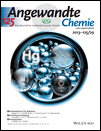Lithium Polysulfidophosphates: A Family of Lithium-Conducting Sulfur-Rich Compounds for Lithium–Sulfur Batteries†
This research was sponsored by U.S. Department of Energy (DOE)/Energy Efficiency and Renewable Energy (EERE) through Vehicle Technologies Office. The investigation of the ionic conductivity of these new compounds was supported by the Division of Materials Science and Engineering, Office of Basic Energy Sciences, U.S. Department of Energy (DOE). The synthesis and characterization was conducted at the Center for Nanophase Materials Sciences, which is sponsored at Oak Ridge National Laboratory by the Division of Scientific User Facilities, U.S. DOE.
Graphical Abstract
Schwefelreiche Lithiumpolysulfidophosphate (LPSPs) ergeben langlebige und effiziente Lithium-Schwefel-Batterien. Die Ionenleitfähigkeiten von LPSPs (3.0×10−5 S cm−1 bei 25 °C) sind um 8 Größenordnungen höher als von Li2S, was entsprechenden Batterien eine ausgezeichnete Zyklenleistung verleiht. Die Tatsache, dass die Batterien eine vollständige Feststoffkonfiguration aufweisen, lässt außerdem einen sicheren Betrieb mit Lithiummetall-Anoden erhoffen.





